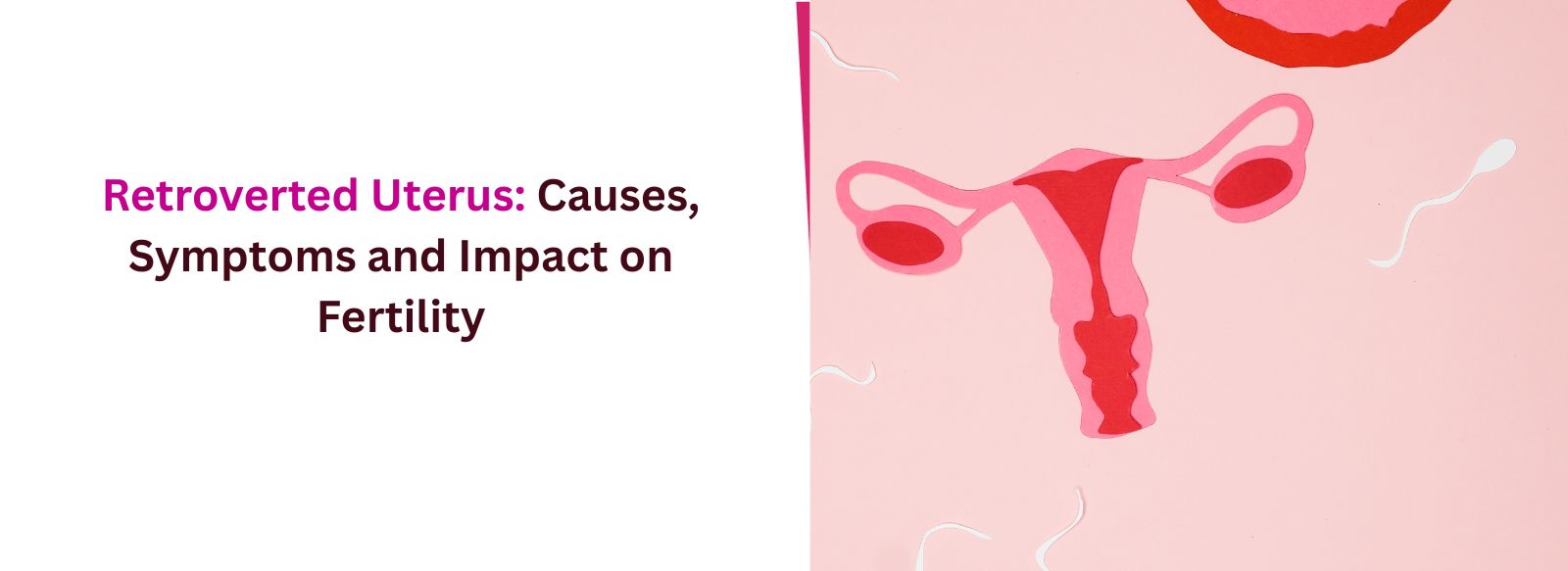A retroverted uterus is a uterus that tilts backward toward the spine instead of leaning forward toward the bladder. It is a common anatomical variation seen in about one in five women. Most people never notice it because it usually does not cause health problems or affect daily life. It is simply a different position of the uterus inside the pelvis. This variation is considered normal and does not change how the uterus functions. Understanding a tilted uterus helps keep the condition in perspective without unnecessary concern.
Position of the Uterus in the Female
In most women, the uterus tilts forward toward the bladder. This forward-leaning position is called an anteverted uterus. It rests between the bladder in the front and the rectum at the back, sitting comfortably in the pelvis. This is the most common position and is considered the typical orientation of the uterus.
In a retroverted uterus, the uterus curves backward toward the spine instead of leaning forward. A simple way to picture this is to imagine the uterus shaped like a letter U pointing toward the lower back. In this position, the cervix may face slightly toward the belly.
How Common Is a Retroverted Uterus?
A retroverted uterus is fairly common and occurs in about 25 percent of women. It is considered a normal anatomical variation and does not cause harm for most people. Many women never notice it because it does not affect how the uterus works or how they feel day to day.
Only a smaller group may experience symptoms such as discomfort during sex, lower back pain, or bladder pressure. For most, the tilted position remains harmless and is often found only during a routine pelvic exam or an ultrasound.
Retroverted Uterus: Causes
A retroverted uterus can be present at birth and is sometimes simply the way the uterus naturally develops. This congenital position is harmless and stays the same unless other factors change it later in life.
Here are other changes that happen later in life:
Pregnancy can stretch pelvic muscles and ligaments.
Menopause can weaken pelvic support due to lower estrogen levels.
Past pelvic surgeries, infections, PID or cesarean births may create scar tissue.
Endometriosis can cause tissue to attach to pelvic organs and hold the uterus in that position.
Fibroids or other pelvic growths may alter the shape of the uterus and affect its tilt.
An enlarged uterus from pregnancy or fibroids can push the uterus into a backward position.
Retroverted Uterus: Symptoms
Here are other signs that people can observe when facing a retroverted uterus (tilted uterus):
Many people with a retroverted uterus never experience symptoms.
Painful periods with cramping or pelvic discomfort.
Urinary problems such as higher frequency, bladder pressure, or occasional infections.
Lower back pain, especially during menstruation or intercourse.
Difficulty using tampons.
Mild lower abdominal protrusion due to the position.
Pain during sex is one of the most common concerns in people with a retroverted uterus, and up to two-thirds of those with symptoms may feel discomfort because the cervix can be bumped during deep penetration.
Some women may notice bowel discomfort, but this usually relates to conditions like fibroids or endometriosis that can cause both pelvic pressure and bowel symptoms. There is no clear research linking chronic bowel issues or IBS directly to a retroverted uterus.
Retroverted Uterus: Diagnosis
Most cases of a retroverted uterus are found during a routine pelvic exam. A clinician checks the cervix and the position of the uterus by touch. Sometimes the tilted uterus can feel similar to a fibroid, so a rectovaginal exam may be used for better clarity.
An ultrasound, including a transvaginal scan, helps confirm the position and rule out concerns like fibroids or endometriosis. Many women first learn about this uterine tilt during early pregnancy scans when the position becomes easier to see.
Retroverted Uterus: Treatment and Management
Retroverted (tilted) uterus treatment is not needed when the person has no symptoms. In such cases, a retroverted uterus is simply a normal variation. When symptoms do appear, care focuses on addressing underlying causes such as fibroids or pelvic inflammatory disease. Managing these conditions often improves comfort and reduces related concerns.
Exercises and Home Support
Kegel exercises help strengthen the pelvic muscles by tightening and relaxing them. These muscles support the uterus and may improve comfort.
Knee-to-chest stretches can also offer relief by briefly shifting the uterus to a more comfortable position. One knee is brought to the chest at a time and held for short intervals.
These methods offer support, but they cannot help when scar tissue fixes the uterus in place.
Non-Surgical Support
A pessary is a small plastic device placed inside the vagina to gently support the uterus in a forward position. It is used for short periods because it may cause irritation or infection. This option can offer temporary relief for those who experience discomfort from the tilted position.
Surgical Options
Uterine suspension or repositioning moves the uterus into a forward-facing position. This can be done through laparoscopic, vaginal, or abdominal methods, and the Uplift technique takes about ten minutes. These procedures are considered when symptoms are significant.
A hysterectomy is a rare choice and is only considered when all other options fail and symptoms remain severe.
Impact of Retroverted Uterus on Fertility
A retroverted uterus usually does not affect the ability to conceive. Most women with this position become pregnant without difficulty.
When someone does face trouble conceiving, the cause is more often an underlying condition such as endometriosis, fibroids, or pelvic inflammatory disease.
A retroverted uterus is considered a fertility concern only after these other factors are ruled out.
Pregnancy with a Retroverted Uterus
During pregnancy, the uterus naturally shifts into a forward position by ten to twelve weeks. This change helps the uterus grow comfortably.
In early pregnancy, the backward tilt may cause pressure on the bladder, trouble urinating, or back pain. After childbirth, the uterus may return to its retroverted position, which is normal and not harmful.
Rare Complication
Uterine incarceration is a rare complication that affects about 0.3 percent of pregnancies. It occurs when the uterus does not shift forward because it is held in place by adhesions and becomes trapped in the pelvis. This can lead to urinary retention and needs early treatment. In rare situations, it can raise miscarriage risk, but correcting the position lowers or removes this risk.
Final Thoughts
A retroverted uterus is a common positional variation and is usually not a cause for concern. Most people have no symptoms, and fertility generally stays unaffected. When symptoms do appear, they can often be eased with simple exercises, position changes, or medical guidance based on the underlying cause. The key is understanding that this condition is normal for many women. Clear information helps reduce worry and supports calm, informed decisions about care when needed.
Struggling to Conceive? Facing Infertility?
Struggling to conceive can feel overwhelming, but you do not have to face it alone. Vardaan IVF Hospital offers calm, clear guidance for couples who need support on their fertility journey. The team focuses on careful evaluation, personalized treatment planning, and steady emotional care at every step.
Each visit is designed to help you feel understood and supported. If you have been trying without success, a simple consultation can help you understand the cause and explore the right path forward. Reach out to begin your journey toward parenthood with confidence.
[Book Consultation Now]





